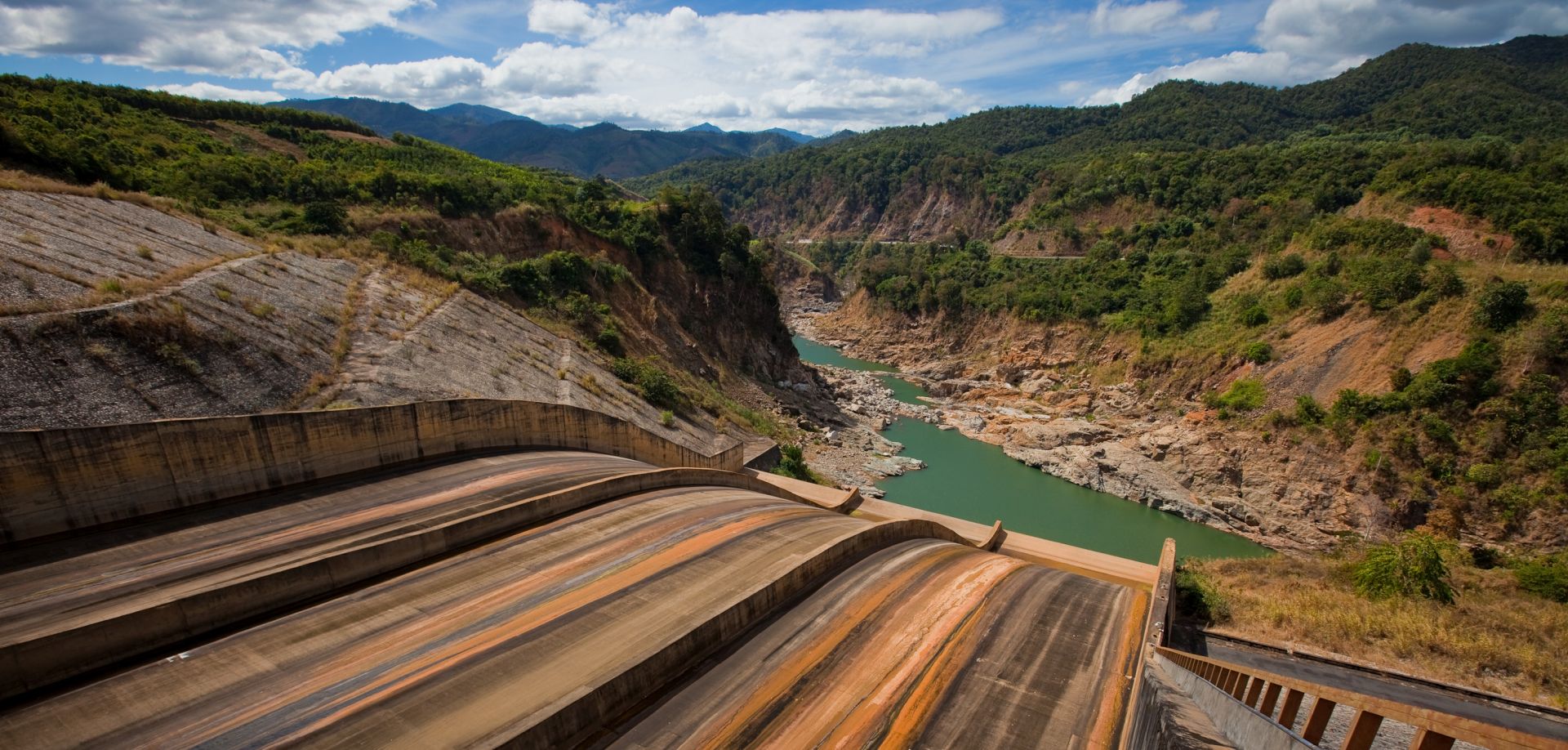The latest hydropower dam collapse raises questions about the proliferation of large-scale energy projects. With extreme weather from climate change, what is the future of hydropower for southeast Asia? ask Lars Blume from GreenID Vietnam and Michael Simon from International Rivers.

Dams won’t be able to handle the flooding and droughts from climate change (Photo by Tycho, CC BY-SA 3.0)
A dam in south-eastern Laos collapsed on July 23rd, flooding six villages and leaving more than 6,000 people homeless. Downstream in neighboring Cambodia, thousands of people were affected; so far, at least 36 people have died in the catastrophe.
The structure was part of the Xe-Pian Xe-Namnoy hydroelectric power project, which was being developed by a consortium of Thai, South Korean and Laotian companies. Known as “Saddle Dam D” and located at the border to Cambodia, it was part of a network of two main dams and five subsidiary dams on the Xepian River.
In Southeast Asia, many large-scale power plants are being planned or constructed, including hydro and coal power plants. While a growing electricity demand is forecast for the entire region, many energy experts are challenging this assumption. Evidence from within the region and elsewhere points to the high risk of stranded assets and of over-supply of electricity in some markets. In addition, large hydro projects regularly underestimate environmental costs and often have long construction times with systematic cost overruns (PDF).
Large dams are highly vulnerable to climate change, as extremes in rainfall patterns make river flows increasingly unpredictable. Too much rain means flooding and the increased risk of dam failures. And more frequent droughts compromise the performance of hydro dams, rendering them economically nonviable. The World Bank has noted that “heavy reliance on hydropower creates significant vulnerability to climate change” for many countries, which “may require a policy decision to diversify away from hydropower.”
Most governments see domestic electricity production as the ultimate way to ensure energy security and independence. For Laos, one of East Asia’s poorest countries, the situation is a little different. The Lao model relies on a vision for regional integration of supply. Laos began opening up to the world in the 1990s, but despite economic reforms, the country remains poor and heavily dependent on foreign aid and investment.
Laos has an official electrification rate of 92% of households, and a total of 42 power plants (39 hydropower plants, 1 coal plant, and 2 sugarcane-powered plants). The country has 4,984 MW of installed hydropower capacity that generated an estimated 22.7 TWh in 2017. The per capita average consumption of energy is 627 KWh, while the overall energy consumption is 4,239 GWh per year.
Laos could provide itself completely with self-produced electricity. However, there are an additional 53 hydropower plants that being planned or constructed. If all are finalized, by 2020 there will be more than 90 hydropower plants in Laos with a combined installed capacity of almost 14,000 MW, increasing the country’s electricity surplus even more.
But this energy boom is not driven by domestic markets. Steered by the nation’s economic development strategy, the Lao government intends to be a regional net exporter of electricity to neighboring countries. The government anticipates that by 2025, hydropower will become the country’s biggest source of revenue.
This development path is high-risk from an economic perspective. Most countries in the region still prioritize domestic generation, and electricity imports are not a part of future power plans. Besides, the global success of solar PV and wind power are still bringing electricity costs down, challenging the economics of existing production units. Laos has a high untapped potential of solar PV and wind power: more sustainable alternatives for producing electricity for export are already available.
The latest dam incident is a strong reminder that profit is not everything, and that dams come with a high risk for the local population and the environment. The companies involved must be held accountable for the disaster, and the reparations.
Hydropower plants, current and projected, have been shown to have dire impacts on the future of the Mekong, one of the world’s longest, largest, and most resource-rich rivers. These rivers are the lifeline of rural communities and local economies, but they are being blocked, diverted and decimated by dams.
Fish stocks will be especially hard hit, with an estimated loss of 30% to 40% of current fisheries by 2040. By that date, there will also be an almost total loss of sediment flow to the Mekong Delta in Vietnam, the Mekong River Commission warned in April. For many years, concerns have been raised that dams are expected will reduce food security and agricultural productivity – contributing to increased poverty, loss of connectivity for rivers and aquatic ecosystems, and heightened climate vulnerability.
Those affected by the latest disaster must remain the first priority of the companies and government agencies responding to the humanitarian crisis caused by the dam break. But it is also time to reconsider the energy sector, and put new value on rivers and water resources.
A rethinking of the current approach presents an opportunity for Laos to invest in safer, cheaper and more reliable renewable energy options. Now a regional effort is needed to support Laos in turning this latest hydropower disaster into a catalyst for more decentralized and participatory development path.
Lars Blume works for GreenID, a Vietnamese non-profit organization that works to promote sustainable development in Vietnam and the larger Mekong region.
Michael Simon manages the International Rivers Asia teams in South and South East Asia and China, as well as providing leadership in key policy and program areas.